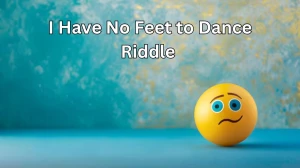What walks on 4 legs in the morning 2 in the afternoon and 3 at night? Riddle Answer Exposed
by
Updated Jun 24, 2024

What walks on 4 legs in the morning 2 in the afternoon and 3 at night? Riddle Explanation
This riddle “What walks on 4 legs in the morning 2 in the afternoon and 3 at night?” describes a creature that changes the number of legs it uses throughout different times of the day. In the morning, it walks on four legs, symbolizing its youthful stage when it crawls on hands and knees. As the day progresses into the afternoon, it walks on two legs, representing adulthood where it stands upright.
Finally, in the evening of its life, it uses three legs, including a walking aid, symbolizing old age. This progression from four legs to two and then three legs represents the stages of life from infancy to adulthood and finally old age.
What walks on 4 legs in the morning 2 in the afternoon and 3 at night? Riddle Hints
These are some simple understandable and easy hints to the riddle What walks on 4 legs in the morning 2 in the afternoon and 3 at night?”.
- In the morning (early stages of life), it crawls on all fours.
- In the afternoon (middle of life), it walks on two legs.
- At night (later stages of life), it walks with the help of a third leg.
What walks on 4 legs in the morning 2 in the afternoon and 3 at night? Riddle Answer
The answer to the riddle “What walks on 4 legs in the morning 2 in the afternoon and 3 at night?” is “Human”. The life of a human starts on four legs, then walks on two legs, and later on three legs.
What walks on 4 legs in the morning 2 in the afternoon and 3 at night? Riddle Answer Explanation
The riddle “What walks on 4 legs in the morning 2 in the afternoon and 3 at night?” describes the stages of human life through the number of legs used: beginning with four legs in the morning representing infancy, progressing to two legs in the afternoon signifying adulthood, and ending with three legs at night symbolizing old age.
The transition from crawling to walking upright and then needing a walking aid in old age illustrates the journey of human development and aging. It encapsulates the cyclical nature of life, where individuals start dependent and vulnerable, gain independence and strength, and eventually require support and assistance as they age.
The riddle cleverly uses the concept of legs as a metaphor for the physical and metaphorical stages of human existence, making it both thought-provoking and reflective of the human experience




